What's New
Displaying results 2491 - 2500 of 4914
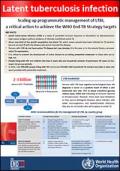
Resource | Fact Sheets,
- Latent tuberculosis infection (LTBI) is a state of persistent immune response to stimulation by Mycobacterium tuberculosis antigens without evidence of clinically manifested active TB.
- About one-third of the world's population has latent TB, which means people have been infected by TB bacteria but are not (yet) ill with the disease and cannot transmit the disease.
- Persons with LTBI do not have active TB disease but may develop it in the near or in the remote future, a process called TB reactivation.
- It is critical to prevent the development of active disease by providing preventive treatment to those who are at high risk.
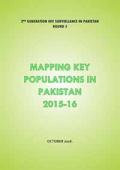
Resource | Publications,
The Overall objective of this mapping study was to update population size estimates of selected key populations (PWID, FSWs, MSM & TGs) to create evidence for developing action plans for HIV prevention interventions in Pakistan. A total number of 23 cities/towns were selected for Mapping. This included 13 cities in Punjab province, 6 in Sindh Province and 2 cities each in KPK and Baluchistan provinces.
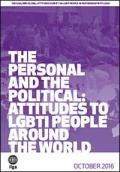
Resource | Publications,
In this report, ILGA presents data on two sets of attitudes that the survey reveals – firstly, how respondents respond at a personal level to encountering LGBTI people or issues, and secondly the more ideological or political attitudes they may hold. The first set of questions cover issues such as do you know someone LGBT, how would you feel about a LGBT neighbor, or if your child presented LGBT, while the second set of questions tend to start with ‘should’: should same sex marriage be legal, should human right be for everyone, regardless of SOGI. This survey shows how in various cases there are contradictory attitudes in the personal and the political, and of course, this varies widely at country levels.
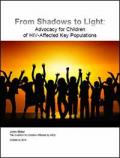
Resource | Publications,
For many years now, the children of HIV-affected key populations—sex workers, transgender people, people who use drugs, and gay men and other men who have sex with me—have remained in the shadows, figuratively tucked behind their parents’ legs, out of sight. A broad alliance of community groups, NGOs and funders is emerging to bring these children into the light.
Between November 2014 and September 2016, an international working group gathered information, analysed it, and then came together with community, funder and NGO allies to identify the key issues and develop advocacy demands—and began to draw a roadmap for an advocacy strategy.
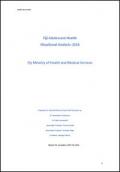
Resource | Publications,
Over the past decade there has been significant investment in strengthening child health programmes and services in Fiji. This has brought improved health outcomes for neonates, infants and children. However to date, there has been less investment in the health and wellbeing of adolescents.
The purpose of this document is to provide the Ministry of Health and Medical Services (MoHMS) and other government Ministries and their partners with a concise review and analysis of the health needs of adolescents in Fiji. The focus is on physical and mental health (including sexual and reproductive health, mental disorder and substance use, nutrition and rheumatic heart disease). Some relevant social determinants are highlighted (particularly education and employment), as these are important drivers for adolescent health and well-being.

Resource | Data Sheets,
Sixteen years of progress since the International AIDS Conference was last held in Durban. Millions of lives saved. But to end the AIDS epidemic there are new milestones to reach, barriers to break and frontiers to cross.
The data provided in this document are just a sample of the data available from UNAIDS. Additional data are available at AIDS Info.
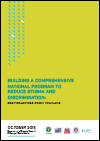
Resource | Publications,
Thailand has developed a national framework to measure HIV related S&D to monitor in several populations. To reduce costs in monitoring progress, S&D related questions were added to the existing national surveys of the general population and the integrated HIV biological and behavioral surveillance surveys (IBBS) of key populations, including people who inject drugs (PWID), men who have sex with men (MSM), transgender women (TGW), female sex workers (FSW), male sex workers (MSW) and migrant workers.

Resource | Publications,
Since 2012, Thailand has prioritized Stigma and Discrimination (S&D) reduction as one of the primary goals in its National AIDS Strategy. In addition, Thailand has reinforced its commitment to reduce S&D under the National Operational Plan for Ending AIDS 2015-2019 and the current national strategy to End AIDS 2017-2030.
To complement Thailand’s strategies to end AIDS, a comprehensive and sustainable framework to measure S&D has been developed to provide evidence to generate commitment and interventions to reduce S&D in Thailand. Measuring S&D in key populations (KP), People living with HIV (PLHIV) and health care providers serving those populations, presents a meaningful picture for developing effective interventions and monitoring national progress in S&D reduction in health care settings.
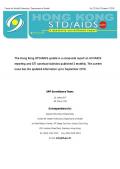
Resource | Publications,
The Hong Kong STD/AIDS update is a composite report on HIV/AIDS reporting and STI caseload statistics published 3 monthly. The current issue has the updated information up to September 2016.
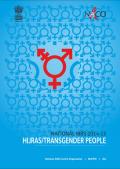
Resource | Publications,
The National IBBS was implemented among six population groups comprising Female Sex Workers (FSW), Men who have Sex with Men (MSM), Injecting Drug Users (IDU), Hijra/Transgender people (H/TG), Migrants and Currently Married Women (CMW) in high outmigration districts. The implementation was carried out with technical support from eight leading government public health institutes of the country. This report presents the findings of the National IBBS among Hijra/Transgender(H/TG).





